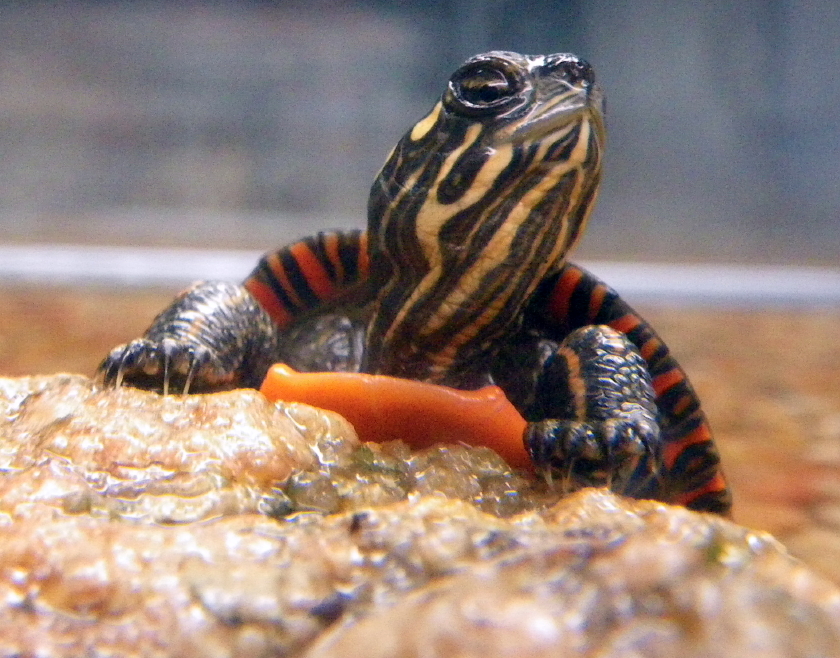Painted Turtle Hatchling Glories in New Winter Home
The turtle season in New England is too short on a good year. Females struggle to emerge from winter brumation (reptilian hibernation) as temperatures slowly rise in late spring. Once the alarm clock rings, they hurry through wake-up, bask a bit to restore internal temperature, forage for calories to recover from more than six months of forced dieting, swing into a round or two of turtle speed dating, pad lots more calories to develop a clutch of eggs, crawl through predator infested paths to reach their nesting site, excavate and then conceal a subterranean egg chamber for their precious eggs, for many species try to squeeze in a second nest, bulk up on food to replace as much as 20% of their body mass donated to their offspring, and finally collapse into six months of welcomed rest as temperatures plunge in early fall. For a turtle, actually for any species, the pace is hectic.
So, when we have a REALLY compressed season like 2009, a year without springtime when everthing turtle was delayed two weeks to a month, the situation becomes extremely dicey for adults and lethal for baby hatchlings. Many emerge from nests too late for any reasonable chance of survival. That’s when the Turtle Journal Team and a host of other partners swing into action to save some of these at-risk babies through over-wintered headstarting.
Click Here to View Video in High Quality
These diamondback terrapin hatchlings were double-saved. First, their nest was rescued from a construction site on Great Island in Wellfleet on Outer Cape Cod by an observant construction team. They were relocated to a safe incubation spot. Now they’ve been rescued from a late emergence at the end of October that would have doomed them. Notice how even on Halloween they still have their natal egg teeth! These tiny miracles are wonderfully happy in their warm water surroundings.
Click Here to View Video in High Quality
This painted turtle was the runt of its litter, coming out long after its siblings had disappeared back into the pond. The snapper was rescued as an egg that was dropped on an asphalt road. In this unusual year, the egg took 142 days (!!!) to incubate, leaving a very weak baby that needed a lot of TLC to survive.
Click Here to View Video in High Quality
Something you never have a chance to see in the wild is snoozing baby turtles. After an exhaustive day of playing, frolicking and practice swimming, they gently doze off into the land of Turtle Nod. As hatchlings they are very tactile and feel secure in sleeping in close touch with their siblings.
Eastern Box Turtle Hatchling
The year has been very hard on all northern turtles, not just aquatic species. This little Eastern box turtle and five of its siblings emerged as frost formed on the pumpkins.
Happy Halloween from Turtle Journal. Scary, huh? But I do like the costumes!

